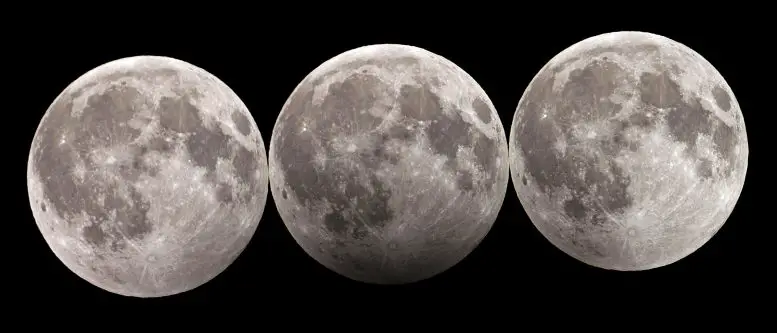Today’s lunar eclipse will be a great astronomical spectacle
- May 5, 2023
- 0
On May 5, 2023, people around the world will witness a lunar eclipse in which the Earth passes between the Sun and the Moon and casts some of
On May 5, 2023, people around the world will witness a lunar eclipse in which the Earth passes between the Sun and the Moon and casts some of

On May 5, 2023, people around the world will witness a lunar eclipse in which the Earth passes between the Sun and the Moon and casts some of its shadow on the Moon. The eclipse will not be in the US this time, but will be visible in most of Africa, Asia, Australia and Europe. This eclipse isn’t what some call a “blood moon” because it won’t turn red. Instead, the Moon will darken slightly as it passes through the lighter part of Earth’s shadow, penumbra.
Both lunar and solar eclipses are due to certain orientations of the Earth, Sun, and Moon. A lunar eclipse occurs when the shadow of the Earth completely or partially covers the Moon. This can only happen when the Moon is directly opposite the Earth from the Sun, which is also a full moon.
If the moon had a perfectly flat orbit, every full moon would be a lunar eclipse. However, the Moon’s orbit is inclined by about 5 degrees relative to Earth’s orbit around the Sun. Because of this slight tilt, often the full moon ends just above or below the shadow cast by the Earth.

Lunar eclipses can only occur during the full moon, when the Moon is opposite the Sun. Credit: Orion 8/Wikimedia Commons, CC BY-SA
But twice in a lunar orbit, the Moon crosses the same horizontal plane as the Earth and the Sun. If this happens during a full moon, the Sun, Earth and Moon will form a straight line and the Moon will pass through the Earth’s shadow, resulting in a lunar eclipse.
When the sun shines on the Earth, the Earth casts a shadow behind it. But the darkness of shadows is not always uniform, and Earth’s shadow is no exception. Rays of light from a wide or elongated light source, such as the sun or a flashlight, do not all come from the same place. Because the Sun is large, there can be quite a distance between the sources of light rays directed at the Earth.
This difference in position means that when the Earth blocks light from one part of the Sun, it may not block light from another part of the Sun. This causes parts of the Earth’s shadow to be darker – the darkest part is where all light is blocked, and the light segments are because some light still passes through the Earth.
A total lunar eclipse is when the Moon completely passes through the darkest part or shadow of the Earth’s shadow. A partial lunar eclipse is when a shadow covers part of the Moon. The May 5, 2023 eclipse is the last type of eclipse in which only the lighter part of the shadow covers the Moon, hence it is known as a penumbral lunar eclipse.
When a lunar eclipse occurs, you can see it as long as you are on the night side of the Earth. The penumbral eclipse on May 5 will be visible over most of Europe and Africa at moonrise, Asia and Australia will see the full event in the middle of the night, and the Pacific Ocean will see it at moonset.
Lunar eclipses are relatively short and last only a few hours from start to finish. The darkest part of the eclipse, the total eclipse, lasts between 30 and 60 minutes, depending on how close you are to the center of the shadow.
For those living in North and South America where the eclipse will not appear, there will be many more in the next few years. The next lunar eclipse will occur on October 28, 2023 and will be a partial eclipse, mostly visible in Africa, Europe and Asia. But America will experience its own shadowy eclipse on March 25, 2024, followed by a partial lunar eclipse on September 18, 2024.
Source: Port Altele
As an experienced journalist and author, Mary has been reporting on the latest news and trends for over 5 years. With a passion for uncovering the stories behind the headlines, Mary has earned a reputation as a trusted voice in the world of journalism. Her writing style is insightful, engaging and thought-provoking, as she takes a deep dive into the most pressing issues of our time.